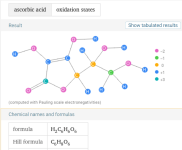- Jun 1, 2023
- 75
- Pool Size
- 16000
- Surface
- Fiberglass
- Chlorine
- Salt Water Generator
- SWG Type
- Hayward Aqua Rite (T-15)
The attached photo is a brownish stain at the waterline and 3-4" below. Not sure exactly when it started, but believe it was after adding make up water (well, with known high iron, but run thru a metals pre-filter), or possibly after shocking with CalHypo. This was all before finding TFP earlier this year. I'm skeptical of the true efficacy of the pre-filter, but it may help a little. The CalHypo...well, now I know what to do to shock.
Also attached are recent tests at a local pool store for metals of the hard well water, softened well water, and current pool water all taken the same day.
Today, I tried AA test and it does a very very little bit to change the stain. CalHypo in a sock did nothing. But ph down instantly erased it! From everything I've read, this means copper. Pls comment if it could still be iron (or something else), as that is what I'd expect from my well water. Regarding copper: I have never used algecides (unless the pool co put some in to open up?), have a CuLater put in by the PB. Only other possible thing was the phosphate remover and clarifier the PB used (Phosphate 9000 and Pool Blue; spec sheets here if needed Spec Chem - MSDS). Not sure if those contain copper or not, or would create staining? I do have copper pipe in the house (20 yrs old).
The questions are:
1. If I would put the ph down in a sock and use 3-5 lbs (big guess) to do the all the waterline, what's the risk? Sulfates & corrosion are what I've read. Is this amount in a 20,000 gal SWCG pool w/heater damaging?
2. If I do that, what's the recommendation for bringing ph back up?
3. Is it copper for sure?
4. Will the stains come back if I use the softened water as make up water?...well, I think I know that answer, or at least a way to find out.
I don't really want to go down the Jack's process for 2 days to 2 weeks. Seems a bit involved for a cosmetic stain like this.
Thanks for any comments.
Allen
Also attached are recent tests at a local pool store for metals of the hard well water, softened well water, and current pool water all taken the same day.
Today, I tried AA test and it does a very very little bit to change the stain. CalHypo in a sock did nothing. But ph down instantly erased it! From everything I've read, this means copper. Pls comment if it could still be iron (or something else), as that is what I'd expect from my well water. Regarding copper: I have never used algecides (unless the pool co put some in to open up?), have a CuLater put in by the PB. Only other possible thing was the phosphate remover and clarifier the PB used (Phosphate 9000 and Pool Blue; spec sheets here if needed Spec Chem - MSDS). Not sure if those contain copper or not, or would create staining? I do have copper pipe in the house (20 yrs old).
The questions are:
1. If I would put the ph down in a sock and use 3-5 lbs (big guess) to do the all the waterline, what's the risk? Sulfates & corrosion are what I've read. Is this amount in a 20,000 gal SWCG pool w/heater damaging?
2. If I do that, what's the recommendation for bringing ph back up?
3. Is it copper for sure?
4. Will the stains come back if I use the softened water as make up water?...well, I think I know that answer, or at least a way to find out.
I don't really want to go down the Jack's process for 2 days to 2 weeks. Seems a bit involved for a cosmetic stain like this.
Thanks for any comments.
Allen







 thanks for that....i like my pool more every day!
thanks for that....i like my pool more every day!

